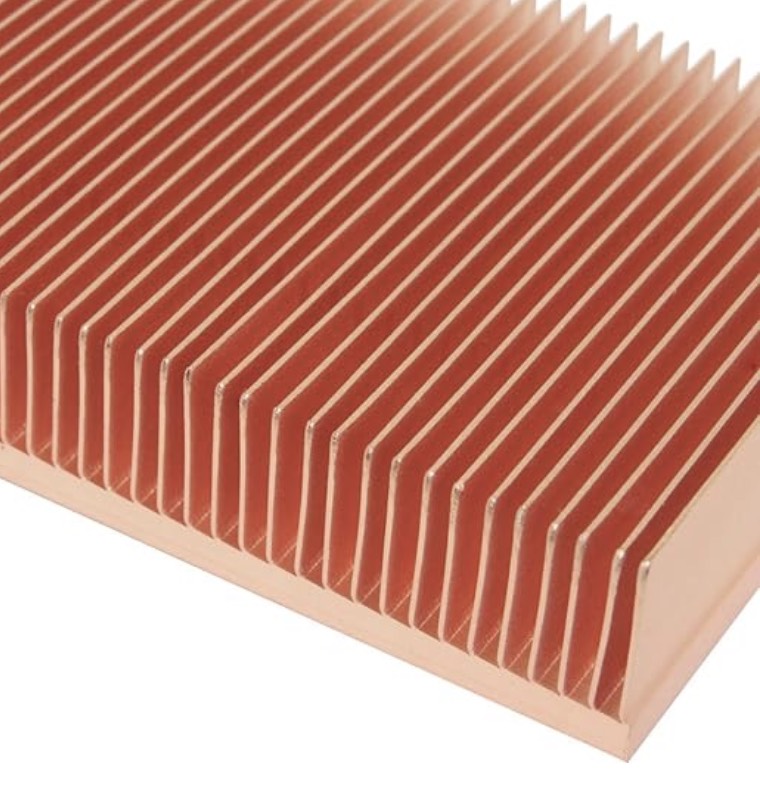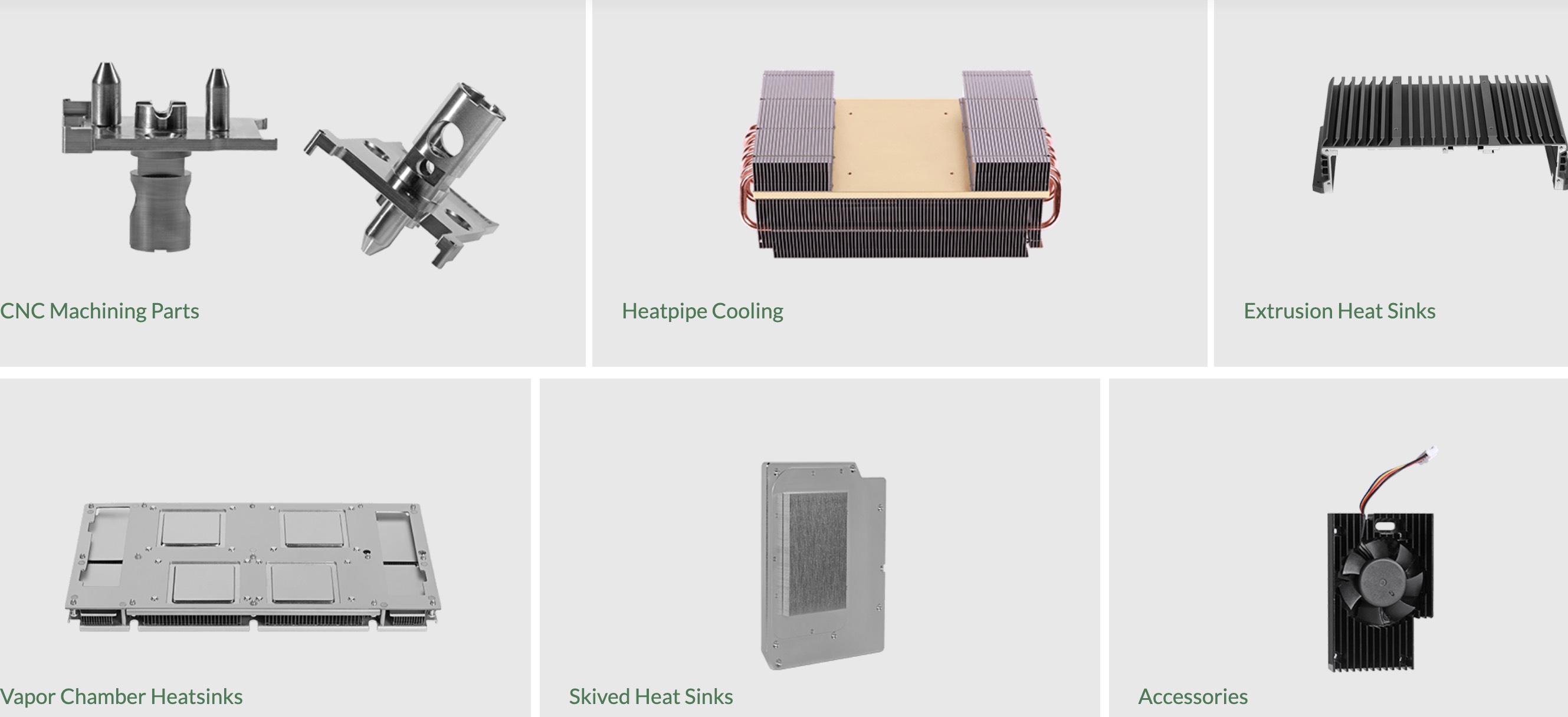The quest for efficient thermal management in electronic devices has led to the widespread use of heatsinks, with copper and aluminum being the materials of choice. This article delves into a detailed comparison of copper and aluminum heatsinks, examining their properties, advantages, and applications to guide users in making an informed decision for their cooling needs.
Before we compare copper and aluminum heatsinks, it's crucial to understand what heatsinks are and how they function. Heatsinks are passive cooling devices that dissipate heat generated by electronic components, such as CPUs and GPUs, into the surrounding environment. They do this by increasing the surface area in contact with the air, allowing for greater heat transfer.
| Thermal Conductivity: | Copper has an exceptionally high thermal conductivity, which means it can transfer heat more efficiently than most other metals. |
| Density: | It is denser, which allows it to draw heat away from components more effectively. |
| Corrosion Resistance: | Copper is less prone to corrosion, ensuring a longer lifespan for the heatsink. |
| Thermal Conductivity: | While aluminum has a lower thermal conductivity than copper, it is still quite effective and widely used. |
| Weight: | It is lighter, which can be an advantage in applications where weight is a concern. |
| Cost: | Aluminum is more cost-effective, making it a popular choice for budget-conscious projects. |
The characteristics of aluminum radiators and copper radiators offer distinct advantages for different applications. Aluminum radiators are known for their lightweight construction, making them easy to handle and install. Additionally, they boast corrosion resistance, ensuring durability even in challenging environments. With efficient heat conduction, aluminum radiators provide quick heating or cooling, contributing to energy efficiency. Moreover, their cost-effectiveness makes them a preferred choice for many projects. On the other hand, copper radiators stand out for their superior heat conduction capabilities. Despite being heavier, they offer unmatched durability and resistance to physical stress. The natural corrosion resistance of copper, coupled with its high thermal capacity, makes copper radiators a reliable option for long-term use. However, their higher initial cost may deter some buyers. Ultimately, the choice between aluminum and copper radiators depends on specific requirements, budget constraints, and environmental factors. Whether prioritizing lightweight design and affordability or prioritizing heat conductivity and durability,
both options offer reliable solutions for heating and cooling systems.

| Higher Efficiency: | Copper's superior thermal conductivity allows for faster heat dissipation, making it ideal for high-power devices. |
| Longevity: | The resistance to corrosion means that copper heatsinks maintain their performance over time. |
| Compact Design: | Due to its efficiency, copper heatsinks can be designed to be smaller without compromising cooling performance. |
Advantages of Aluminum Heatsinks
| Cost-Effective: | Aluminum is less expensive, making it a more accessible option for a wide range of applications. |
| Ease of Manufacturing: | Aluminum is easier to shape and manufacture into complex heatsink designs. |
| Aesthetics: | Aluminum heatsinks can be anodized to provide a variety of colors and finishes, enhancing their visual appeal. |
| High-End CPUs and GPUs: | Where thermal performance is paramount, copper heatsinks are often the preferred choice. |
| Server Farms: | In environments where continuous operation is required, the durability and efficiency of copper heatsinks are invaluable. |
| Mid-Range Electronics: | For components that generate moderate heat, aluminum heatsinks provide a balance of performance and cost. |
| Consumer Electronics: | In applications where budget is a concern, such as home PCs and laptops, aluminum heatsinks are a popular option. |
Copper and aluminum heatsinks find diverse applications across various industries due to their unique properties and thermal conductivity. Copper heatsinks are commonly employed in high-performance electronic devices, such as computer processors, power amplifiers, and LED lighting systems. Their superior thermal conductivity ensures efficient heat dissipation, preventing overheating and maintaining optimal operating temperatures for sensitive electronic components. Additionally, copper heatsinks are favored in applications where space constraints exist due to their compact size and ability to dissipate heat effectively in confined spaces.
On the other hand, aluminum heatsinks are widely utilized in consumer electronics, automotive systems, and industrial machinery. Their lightweight nature makes them ideal for applications where weight is a concern, such as in portable electronic devices and automotive cooling systems. Aluminum heatsinks also offer good thermal conductivity, albeit lower than copper, but they are more cost-effective, making them a popular choice for mass-produced products. Moreover, aluminum heatsinks are corrosion-resistant, making them suitable for outdoor and harsh environment applications.
When designing a heatsink, several factors must be considered:

As you consider the intricate balance between copper and aluminum heatsinks for your thermal management needs, it's worth looking at the expertise of companies like Enner Group . With a stronghold in precision engineering and thermal solutions, Enner Group has been at the forefront of providing cutting-edge heatsink technologies since 2006. Their commitment to innovation is reflected in their comprehensive suite of services ranging from product design to delivery, all backed by a robust one-stop service model that caters to a global clientele. Enner Group's product portfolio is extensive, catering to a wide array of applications from mid-range electronics to high-end computing components. Their heatsinks are designed with meticulous attention to detail, ensuring that each product can efficiently manage heat output while maintaining a compact form factor. The company's thermal simulation software is a testament to their forward-thinking approach, allowing for rapid prototyping and the elimination of suboptimal designs, thus accelerating the development process. Enner Group's promise of a quotation within 24 hours and sample delivery within 7 days underscores their dedication to customer-centric service. Their responsiveness doesn't stop there; with a complaint feedback mechanism that ensures solutions are provided within 48 hours, Enner Group has set a high bar for after-sales support. To explore Enner Group's full range of heatsinks and to understand how their products can address your specific thermal challenges, Discover how their innovative solutions can enhance the performance and longevity of your electronic systems.
By continuing to use the site you agree to our privacy policy Terms and Conditions.